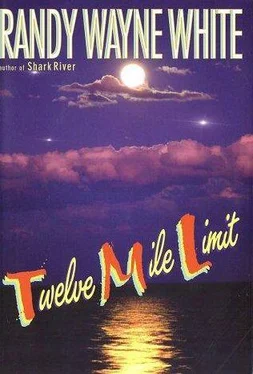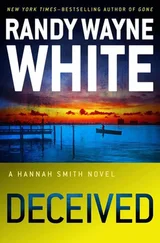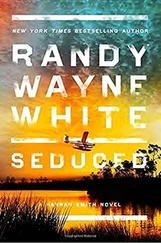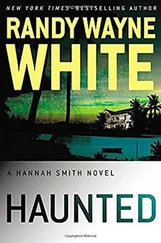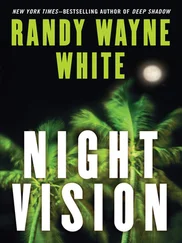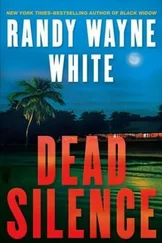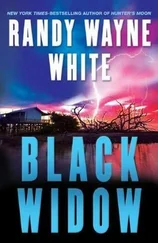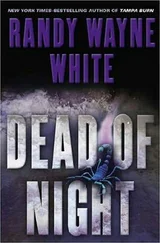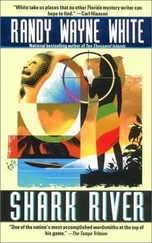Randy White - Twelve Mile Limit
Здесь есть возможность читать онлайн «Randy White - Twelve Mile Limit» весь текст электронной книги совершенно бесплатно (целиком полную версию без сокращений). В некоторых случаях можно слушать аудио, скачать через торрент в формате fb2 и присутствует краткое содержание. Жанр: Триллер, на английском языке. Описание произведения, (предисловие) а так же отзывы посетителей доступны на портале библиотеки ЛибКат.
- Название:Twelve Mile Limit
- Автор:
- Жанр:
- Год:неизвестен
- ISBN:нет данных
- Рейтинг книги:4 / 5. Голосов: 1
-
Избранное:Добавить в избранное
- Отзывы:
-
Ваша оценка:
- 80
- 1
- 2
- 3
- 4
- 5
Twelve Mile Limit: краткое содержание, описание и аннотация
Предлагаем к чтению аннотацию, описание, краткое содержание или предисловие (зависит от того, что написал сам автор книги «Twelve Mile Limit»). Если вы не нашли необходимую информацию о книге — напишите в комментариях, мы постараемся отыскать её.
Twelve Mile Limit — читать онлайн бесплатно полную книгу (весь текст) целиком
Ниже представлен текст книги, разбитый по страницам. Система сохранения места последней прочитанной страницы, позволяет с удобством читать онлайн бесплатно книгу «Twelve Mile Limit», без необходимости каждый раз заново искать на чём Вы остановились. Поставьте закладку, и сможете в любой момент перейти на страницу, на которой закончили чтение.
Интервал:
Закладка:
Amelia sat a little straighter. “Jesus Christ, Doc, no wonder you didn’t want to talk about it.” She made a shuddering, guttural sound. “What a terrible thing to imagine.”
“I know, I know-but remember, what I just described almost certainly did not happen. You weren’t satisfied with the answer I gave you this afternoon, and you weren’t satisfied with the same answer a few minutes ago. It told me you either wanted to be reassured or that you genuinely wanted to explore the most extreme possibilities. I haven’t known you for long, but I know you well enough to respect your intellect and your character. So I told you the truth. An extreme and unlikely truth. My version of it, anyway.”
“Character,” she said, with a hint of self-contempt. “Don’t be too sure about that one. Believe me, I don’t have any more character than the next person.”
I remembered Tomlinson saying that what Amelia had told us was “mostly” true. I don’t believe that he’s a mind reader, but I have come to trust his judgment. Was she offering to share some secret with me, a detail yet to be confided?
I said, “Anything else you want to discuss?” then waited several beats for her to answer before I added, “The first day we met, you asked if you could confide in me. I didn’t know you then. I do now. So the answer is yes. A blanket, unconditional yes. Whatever you want to tell me, any damn private thing you want to say.”
Her reaction surprised me. She cupped her hand around my leg, then leaned and placed her head against my shoulder. “I can see why Janet loved you and all your crazy friends. What you’ve done for me, all the effort you’ve put in. I don’t deserve it, Doc. I really don’t.”
The tone of self-contempt again.
Not much doubt now. There was something she wanted to tell me. I said slowly, delicately, “That night more than four weeks ago, big seas, no moon, the four of you adrift. Out here, not far from where we are right now. Each of you had a responsibility to yourselves to find a way to survive. Not to the group. To yourselves.”
In the darkness, the glow of running lights, I heard her issue a weary sigh.
I added, “There’re a couple of old navy expressions that are supposedly based on some archaic military law: When your ship’s in trouble, use one hand for yourself, one hand for your ship. After that, it’s every man for himself.” I waited again through another long silence before reminding her. “Your ship, Amelia, was gone.”
She replied softly, “I wish they bottled people like you and Tomlinson. I really do. And I wish I could make myself believe that what you just said is true.”
Two days later, Friday, December 12, a package arrived at the marina office via private courier, a sturdy box in brown paper wrapping, heavily taped, with no return address.
I knew that it had to be from Bernie Yeager.
I carried the package home and into my lab and placed it on my stainless-steel dissecting table, which runs the length of the north wall. To my right, beneath the east windows, on a similar table, was the row of working, bubbling aquaria, octopi and fish therein, and more glass aquaria above them on shelves. To my left, along the east wall, near the door, were more tanks, all heavily lidded because they contained the mysterious, disappearing stone crabs and calico crabs.
A quick glance told me that the lids were still in place, my population of crabs undiminished.
In the center of the room, I’d installed a university-style science workstation: an island of oaken drawers and cupboards beneath a black epoxy resin table, complete with a sink, two faucets, electrical outlets, and double gas cocks for attaching Bunsen burners or a butane torch.
Now, from the top drawer, I selected a 5 1/2-inch Mayo dissecting scissors, placed it atop the autoclave, then touched the play button on my wall phone recording machine as I returned my attention to the package.
The recorder is a recent concession to an increasingly integrated, digitized world, and to the growing demands of my small business, Sanibel Biological Supply.
I had more than a dozen messages. I listened to them as I carefully opened the package.
Ransom had bought a little cracker house out on Woodring’s Point. Her toilet was plugged. Could I equip Tomlinson with a plunger, toilet paper, a six-pack of beer, today’s paper, and send him out on my skiff, ASAP?
I smiled. My cousin has the same duplicitous streak as her father. She wouldn’t come right out and say she was lonely, that she wanted the man’s company. She had to attach her private wishes to other needs.
From Colorado College, Colorado Springs, I had an order for two dozen whelk or conch shells, sectioned, cleaned, and bleached. From Davenport Central High in Iowa, I had an order for a hundred live fiddler crabs-what in the hell were they going to do with a hundred live land crabs?
I stopped to jot down the details of several more orders before I heard the voice of Amelia Gardner say: “Hello, Dr. Marion Ford, my new friend and old pal. Greetings from the fifth floor of the Criminal Justice Building, Sarasota, which is a heck of a change from where we were a couple of nights ago, so I’m walking around in kind of a daze. If I sit still too long, the floor starts moving- seriously. Hey, Doc, I want to thank you again for what you and Tomlinson are doing, so maybe you’ll let a nice single lady buy you guys dinner this weekend to celebrate. Or… or just you, if the Stork can’t make it.”
The way Tomlinson looks, the way he behaves, invites nicknames of endearment. Aboard Das Stasi, Amelia had christened him Stork.
What we had to celebrate was the completion of our investigation into the sinking of the Seminole Wind. Behind me, atop the steel military-surplus office desk, stacked neatly next to my black manual typewriter, was the rough draft-twenty-three pages of facts, figures, interviews, and conclusions.
Tomlinson had spent the morning with me, pacing as he dictated from his notes, gesturing wildly when he got excited, while I hunched over the typewriter, banging away with two fingers. We both agreed that the false theories, the nasty rumors that Amelia found so hurtful, could not be addressed directly. The written word has power. To detail those rumors on paper was to give them fresh life, a life of their own. The best way to debunk the rumors was to reveal the facts, simply and concisely. There was no need for advocacy. The data spoke for themselves.
Tomlinson and I wrote it as we would have written a scientific paper. There was a summary, an introduction, a description of methods, then the results of our investigation. We ended with conclusions and a few recommendations. Everything was footnoted with supporting materials listed in an appendix. It all went together quickly because we knew the material intimately, plus we’ve both authored and published many, many papers.
There were some key issues.
Well into the body of the text, I’d written: “The tower to which Amelia Gardner swam is a 160-foot tower, located in the large Naval Operation Training Area north of Key West and southwest of Marco Island. The tower is part of the U.S. Military’s Air Combat Maneuvering Instrumentation (ACMI) system. ACMI towers are equipped with strobe lights, electronic discs, and antennas, and they are maintained by the U.S. Department of Defense through private contractors. The towers are used by both the Air Force and the Navy as electronic way points for a variety of training exercises.
“The towers are shown on some but not all charts, but the waters in which they are located are not off-limits to civilian boaters, and clandestine military operations do not take place in the area. Indeed, there are seven other such towers in the Naval Operations Training area, and they are commonly described in popular sporting magazines as excellent places to fish and common destinations for boaters.
Читать дальшеИнтервал:
Закладка:
Похожие книги на «Twelve Mile Limit»
Представляем Вашему вниманию похожие книги на «Twelve Mile Limit» списком для выбора. Мы отобрали схожую по названию и смыслу литературу в надежде предоставить читателям больше вариантов отыскать новые, интересные, ещё непрочитанные произведения.
Обсуждение, отзывы о книге «Twelve Mile Limit» и просто собственные мнения читателей. Оставьте ваши комментарии, напишите, что Вы думаете о произведении, его смысле или главных героях. Укажите что конкретно понравилось, а что нет, и почему Вы так считаете.
